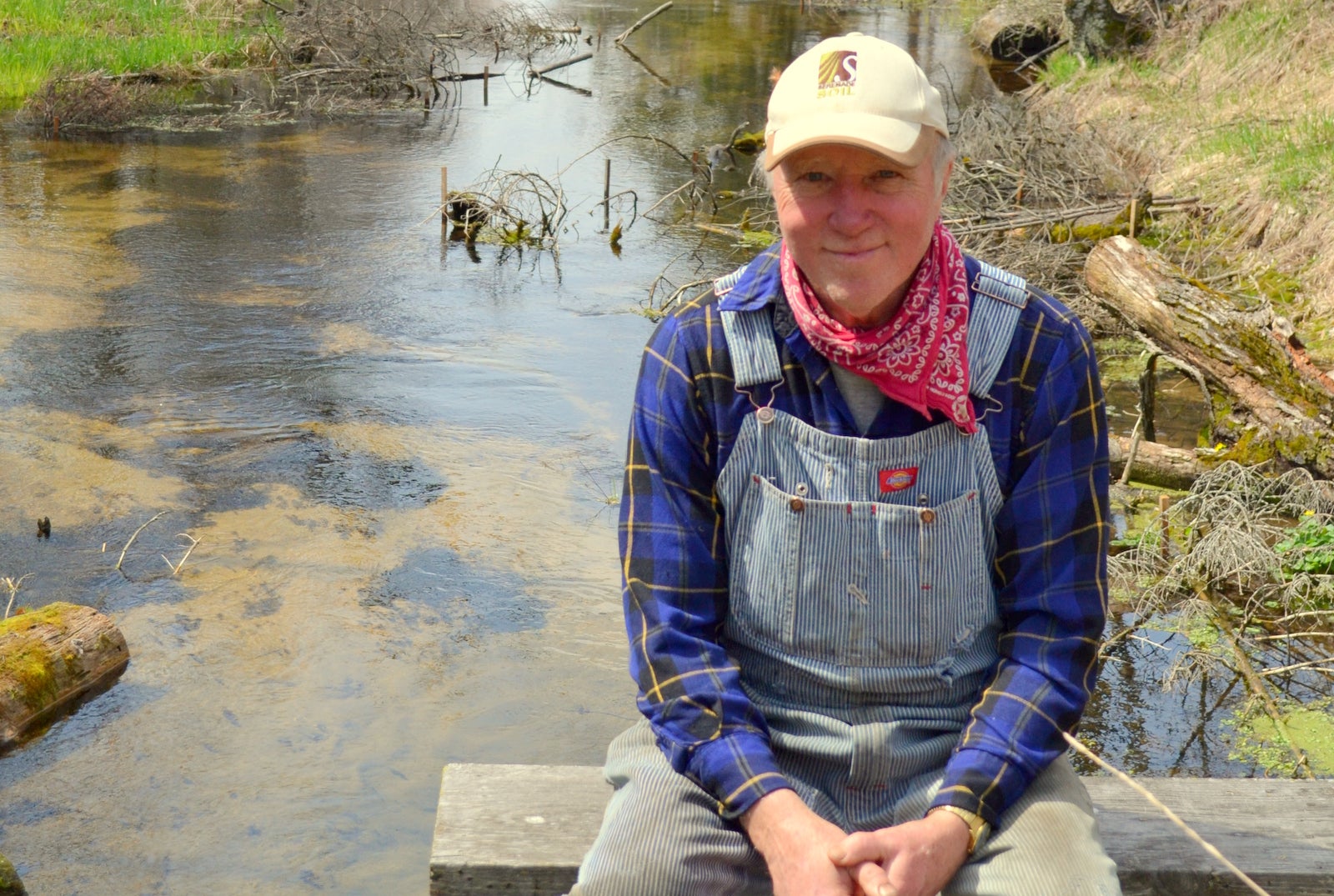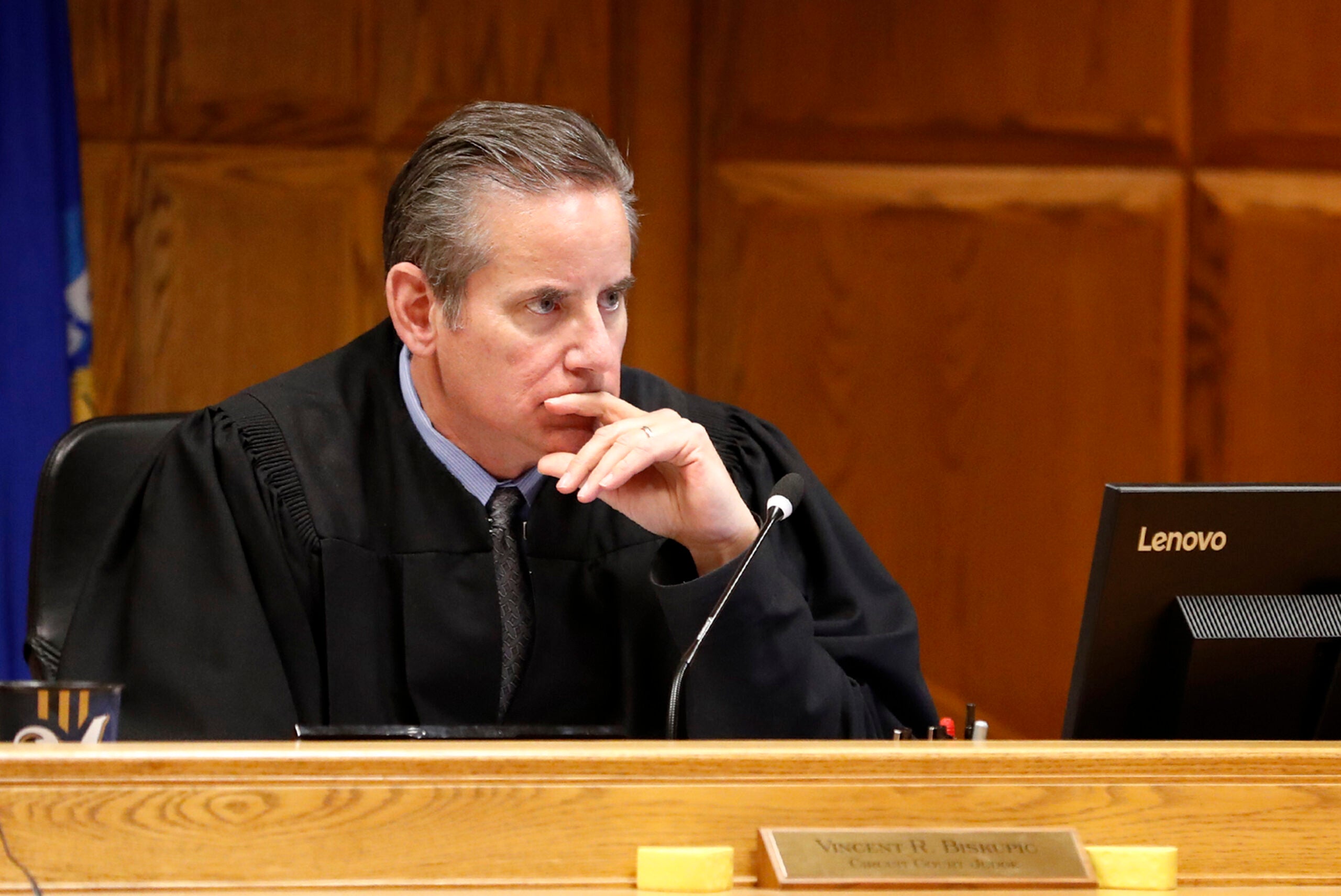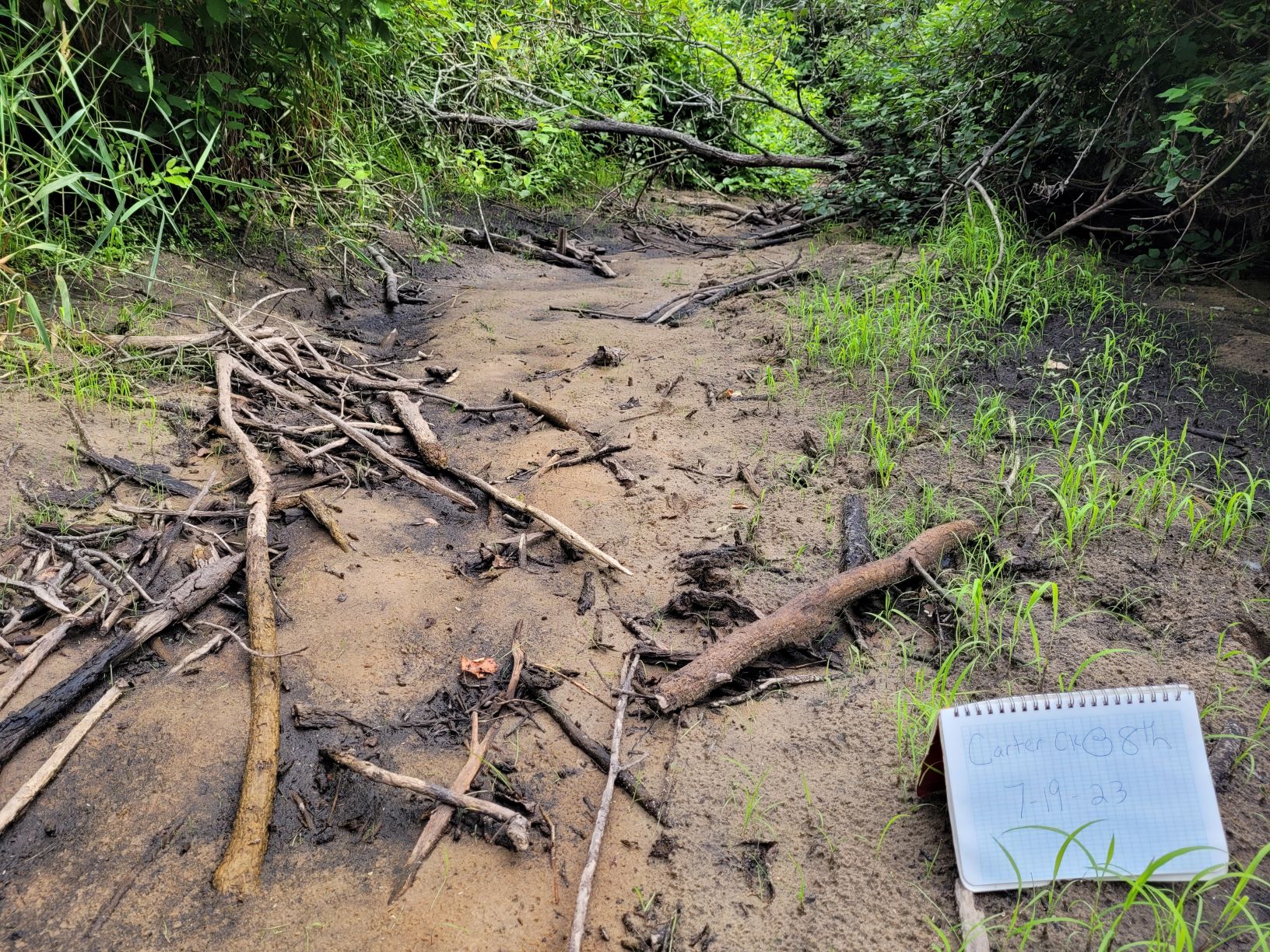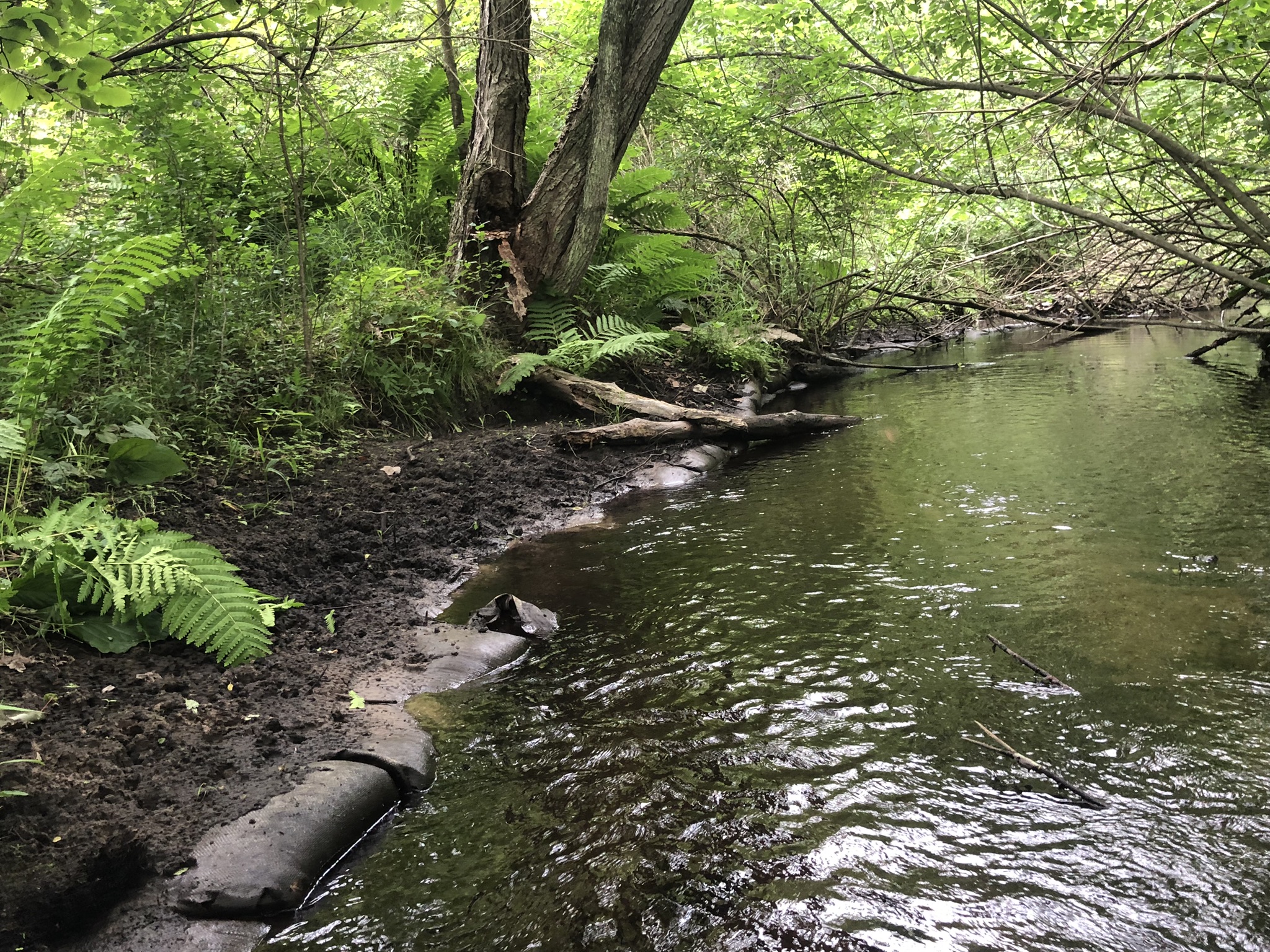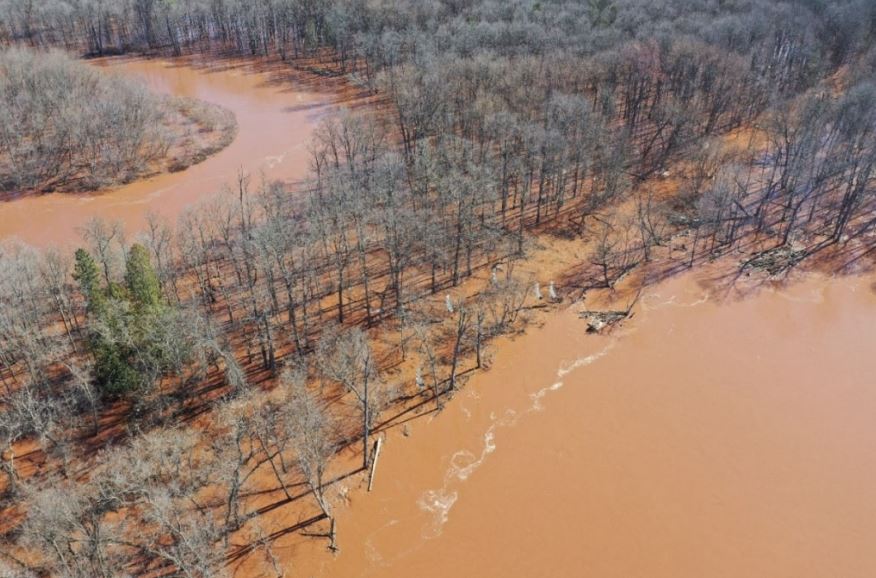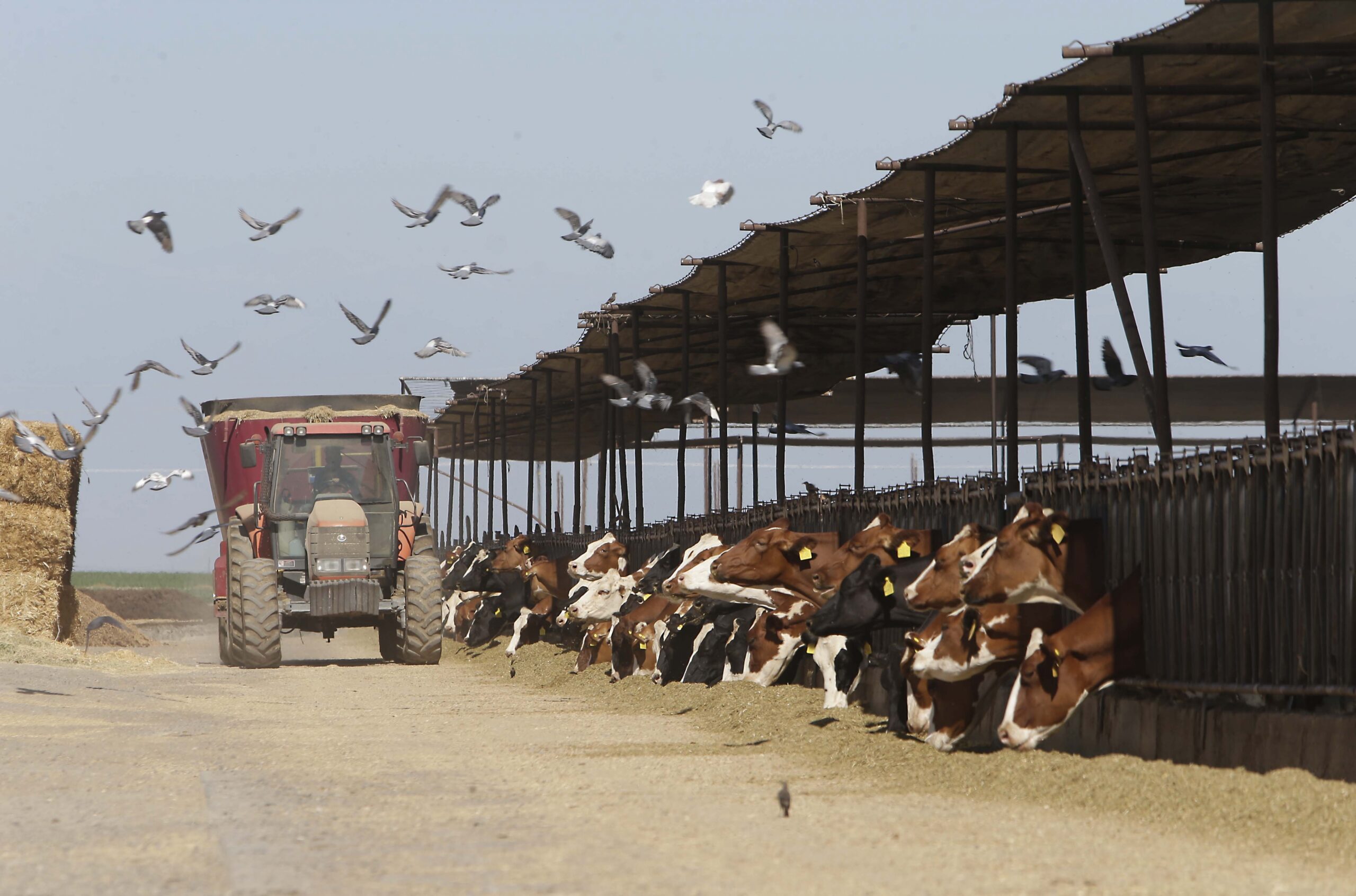A judge has ruled in favor of a central Wisconsin farmer who turned a drainage ditch on his property into a trout stream.
Clark County Circuit Judge Jon Counsell ruled the Portage County Drainage District has to pay Donald Justin Isherwood’s legal fees and reimburse him for the cost of restoring his trout habitat.
Isherwood worked for years to improve the habitat for brook trout in the drainage ditch, Isherwood Lateral, that runs through his property. He added woody vegetation for cover and increased the flow of the spring-fed water. He claimed there were tens of thousands of trout in the stream in January 2017 at spawning season.
Stay informed on the latest news
Sign up for WPR’s email newsletter.

Brook trout spawn in Isherwood Lateral in January 2017 before the habitat was removed. Photo courtesy of Donald Justin Isherwood
The drainage district board saw the project as an obstruction, one that threatened the drainage of surrounding farm fields.
The district used a backhoe to remove the trout habitat on June 6, about three weeks before a court date in which Isherwood was going to argue for a restraining order.
On Wednesday, Counsell called the district’s action “egregious conduct and a flagrant and knowing disregard of the judicial process” that amounted to destroying the evidence needed for a ruling on Isherwood’s request.
“(Counsell) said that was the evidence of the issue, and then they go and they destroy it. It was foolhardy. It was wrong. It was contrary to due process,” Isherwood told WPR after the ruling.
Portage County Drainage District Chair Paul Cieslewicz holds up a map of the district he regulates. Glen Moberg/WPR
Portage County Drainage District Chair Paul Cieslewicz said the district will appeal.
“He is definitely off base. We had a professional engineer and hydrologist give us their professional advice and report that it was obstruction. I don’t know how the judge can be more educated than a professional engineer on this matter,” Cieslewicz said.
Cieslewicz also took issue with the words that Counsell used.
“The judge calling me a bonehead for taking the obstructions out, that is very unprofessional of the judge,” Cieslewicz said. “It’s crazy that the judge can have this much bias and get away with it.”
Counsell ruled that it was “entirely possible to design a meandering flow that can carry as much water as a straight flow,” and that there was “considerable evidence that the project has merit and purposes that are positive.”
“We are working for the establishment of brook trout, which is one of the most sensitive of fish as far as the purity of the water. Nothing endorses our land practices better than when we can say we have brook trout, native brook trout, in the streams that line our fields,” Isherwood said.
Cieslewicz said he worries the ruling could set a precedent and threaten drainage districts across the state.
“You’re looking at a lot of livelihoods and a lot of businesses that could possibly be out of business up in the Central Sands area. Canneries like Del Monte could be in trouble here. Agriculture in Portage County is equivalent to $1.1 billion dollars of economic impact,” Cieslewicz said. “You take that 30,000 acres out of it because we’re now going to turn it back into wetlands or fish habitat, that’s a scary, scary thought.”
Isherwood said despite the removal of much of his work, there are still some brook trout left in Isherwood Lateral.
“Right now spawning is underway. It is haphazard because the project was torn out, but the trout are still there and still trying,” Isherwood said. “And it is a remarkable sight, just to see that nature can take back what is farm waters, and put back this regal moment of trout spawn in a place which is one of the most important commercial food processing areas on the continent.”
Counsell ordered the district to pay Isherwood up to $8,000 to restore the habitat. Isherwood said his legal expenses exceed $40,000.
“I won’t count the money until I see it,” Isherwood said.
Wisconsin Public Radio, © Copyright 2024, Board of Regents of the University of Wisconsin System and Wisconsin Educational Communications Board.

